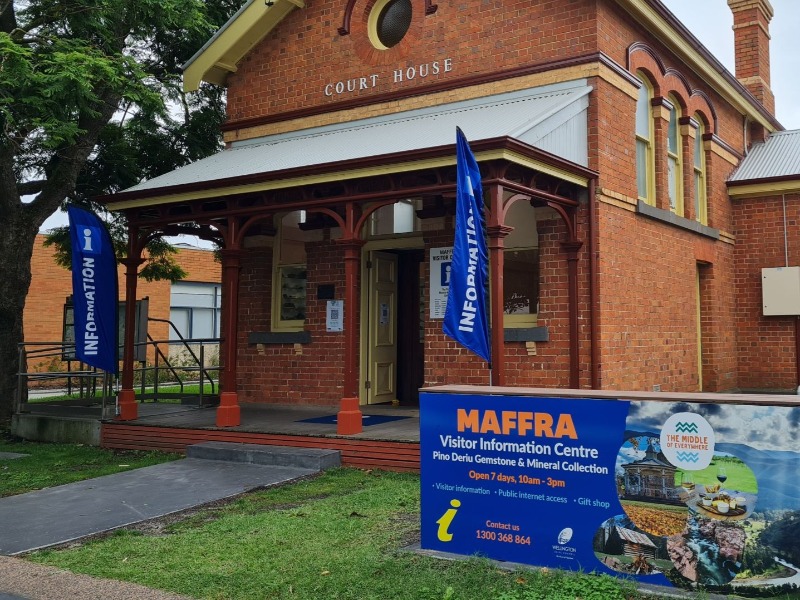Medical Facilities
Pharmacy
Accommodation
About
Once the bustling hub of the sugar beet industry, Maffra is now a charming village bursting with cafes, boutique shopping, and plenty of work from local artists at the Maffra Exhibition Centre, the Briagolong Art Gallery and home to Fonterra, one of the country’s largest milk manufacturers.
There’s also fascinating local history on display here at the Sugar Beet Museum and the Gippsland Vehicle Collection. And if you haven’t had your fill of stretching your legs in the great outdoors, there are plenty of walking tracks along the water at Macalister River Park.
Amenities:
Toilets, Parking, Pharmacy, Shopping Centre, Accommodation, Hospitality outlets and Information Centre

The rail motor arriving at the Maffra Railway Station, c. 1960s.
(Image courtesy of the Maffra and District Historical Society, number PO3382VMFF)

View of dairy factories close to the Maffra Railway Station, which is in the middle foreground.
To the left is the Willsmere Factory, while the Maffra Cooperative and Nestlé factories are in the background on opposite sides of the railway line.
The photograph shows branch lines leading to sidings at each of the dairy factories, while the main line snakes westwards towards Tinamba. Murray Goulburn now occupies the sites of the Maffra Co-operative and Nestlé factories.
(Image courtesy of the Maffra and District Historical Society, 04811)

W. Elliot, in railways uniform, standing on the Maffra platform with the sugar beet factory in the background.
(Image courtesy of the Maffra and District Historical Society, 04516)

A view of the Maffra Sugar Beet Factory with the vegetable dehydrating factory in the foreground.
The main section of the sugar beet factory has since been destroyed but the building on the left,where the sugar was stored, still remains. The vegetable dehydrating factory is now the home of the Gippsland Vehicle Collection
(Image courtesy of the Maffra and District Historical Society, 02178)
History
Thanks to the sugar beet and dairy industries, Maffra was an industrial hub from the 1880s until World War II, home to multiple dairy processing factories, as well as a massive sugar beet factory that processed beets grown by farmers across the area. Though wartime labour shortages slowed the sugar beet industry, the dairy industry in the region continued to thrive, and wartime industries like flax and dehydrated vegetables cropped up to meet military demand.
Although this section of the railway line was officially closed in 1987, freight trains between Stratford and Maffra continued to run until 1994, taking out Murray Goulburn’s dairy products, and bringing in fertiliser.





